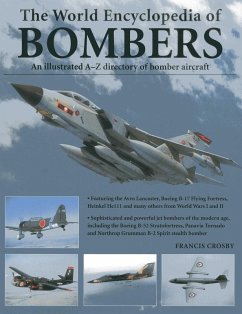
Chinese Military Aviation 1911-1937 Volume 1
Air Forces in Beijing and Guangzhou, 1911-1927
Versandkostenfrei!
Erscheint vorauss. 15. Dezember 2025
22,99 €
inkl. MwSt.

PAYBACK Punkte
11 °P sammeln!
This landmark volume offers the first detailed and comprehensive study of the earliest Chinese military aviation forces, focusing on their establishment and development in Beijing and Guangzhou between 1911 and 1927. Drawing on a vast range of archival sources in Chinese, English, French, German, Russian and Japanese--many of them newly accessible or previously overlooked--this work reconstructs the emergence of aviation as a tool of state and warlord power in early Republican China. In the wake of the 1911 Revolution, both the Beijing-based central government and the rival regimes in the sout...
This landmark volume offers the first detailed and comprehensive study of the earliest Chinese military aviation forces, focusing on their establishment and development in Beijing and Guangzhou between 1911 and 1927. Drawing on a vast range of archival sources in Chinese, English, French, German, Russian and Japanese--many of them newly accessible or previously overlooked--this work reconstructs the emergence of aviation as a tool of state and warlord power in early Republican China. In the wake of the 1911 Revolution, both the Beijing-based central government and the rival regimes in the south recognised the potential of aviation to project power and prestige. The book documents the foundation of the Nanyuan Flying School near Beijing in 1913 and Sun Yat-sen's competing efforts to build an air arm in Guangzhou. It explores in depth the personalities involved--Chinese pioneers, foreign instructors and advisers, warlords, and political leaders--and reveals how fragile institutional frameworks attempted to sustain these fledgling air services amidst political chaos, financial constraints and shifting allegiances. The study charts the acquisition of French, British, American, Japanese and Italian aircraft, the involvement of Western aviation companies, and the effects of international arms embargoes on Chinese procurement efforts. It also details China's early attempts to manufacture its own aircraft and the creation of local repair and production workshops. Operations during internal conflicts such as the White Wolf Rebellion, the Zhili-Anhui and Zhili-Fengtian Wars, and anti-bandit campaigns are analysed, revealing how aviation was applied--sometimes symbolically, sometimes operationally--in China's fractured military landscape. Through meticulous research and a critical approach to sources, this volume overturns simplistic narratives of Chinese aviation as merely derivative or dependent. Instead, it presents a nuanced picture of a complex and often chaotic process of technological and institutional adaptation under extreme conditions. Dozens of rare photographs and extensive appendices listing aircraft types, air force leaders, and aviation students further enhance its value as a reference work. Volume 1 sets the foundation for a multi-volume series that will trace Chinese military aviation from its inception through to the eve of the war with Japan. It is an essential resource for historians of modern China, air power, interwar military innovation, and international arms transfers.












